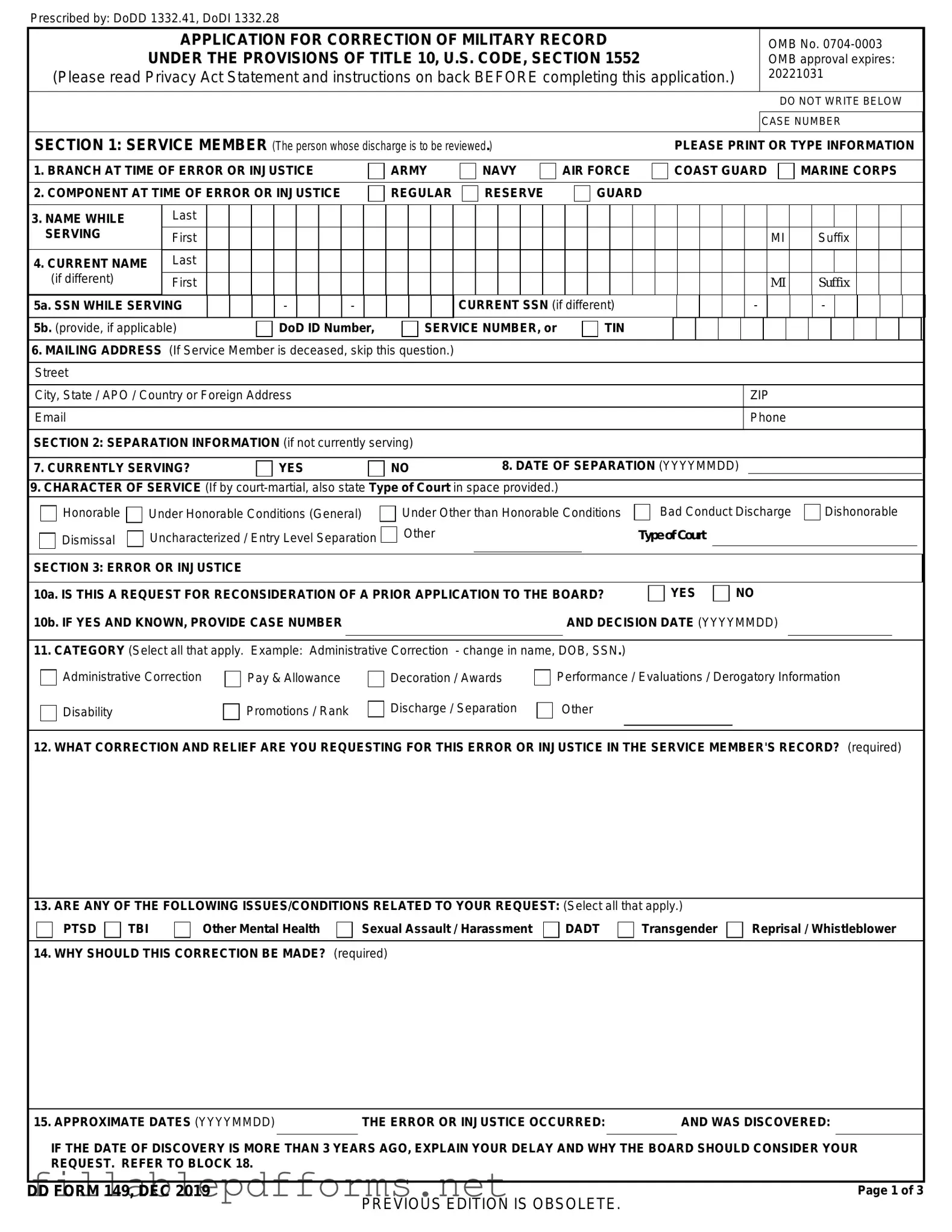DD 149 PDF Template
The DD 149 form is a crucial document used by military service members to apply for a correction of military records. This form allows individuals to request changes to their discharge status, which can significantly impact their benefits and future opportunities. Understanding how to effectively complete and submit this form is essential for those seeking to rectify inaccuracies in their military history.
Launch Editor Here
